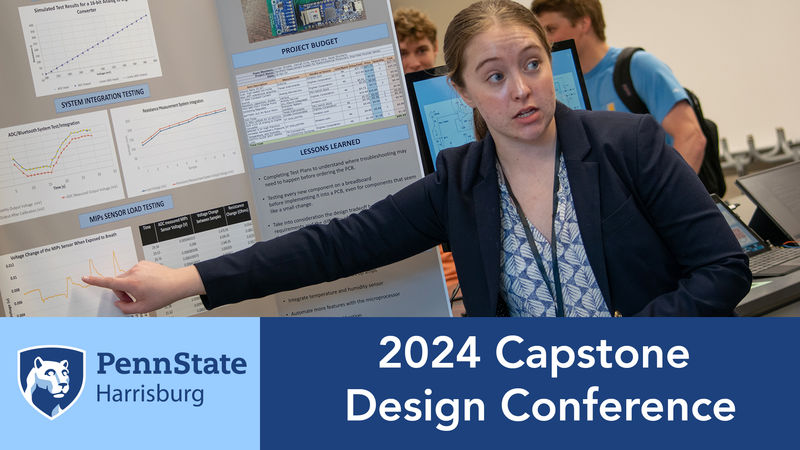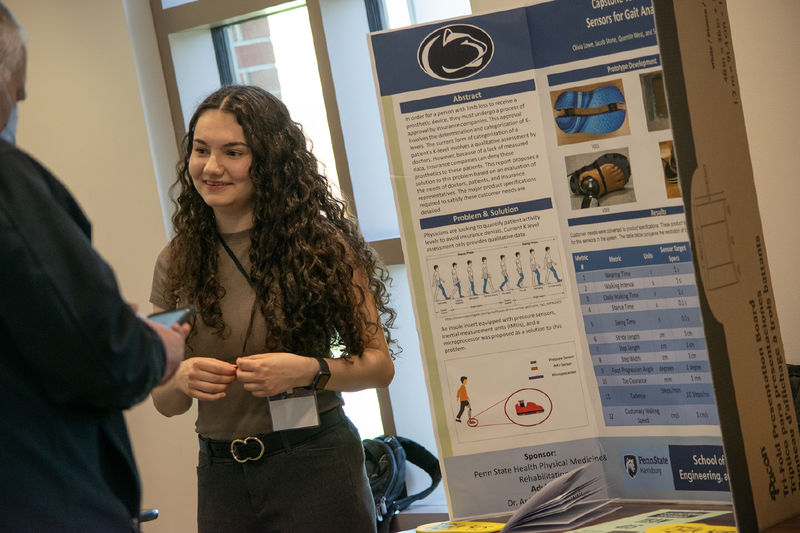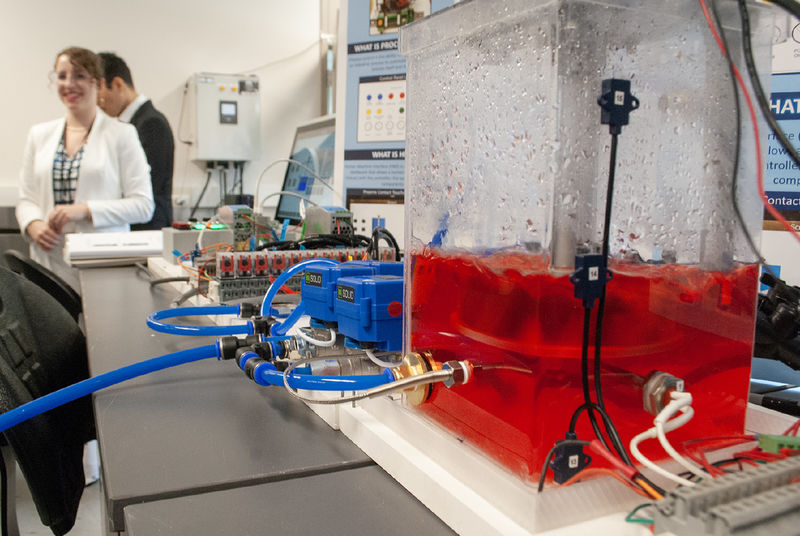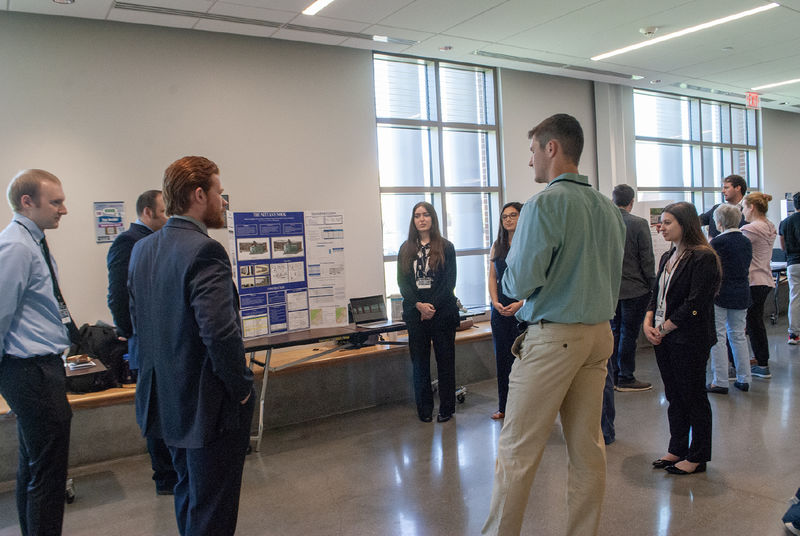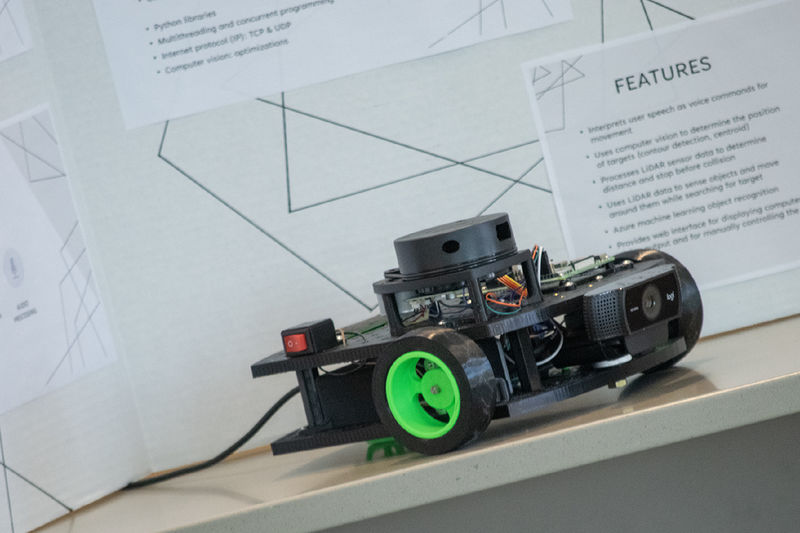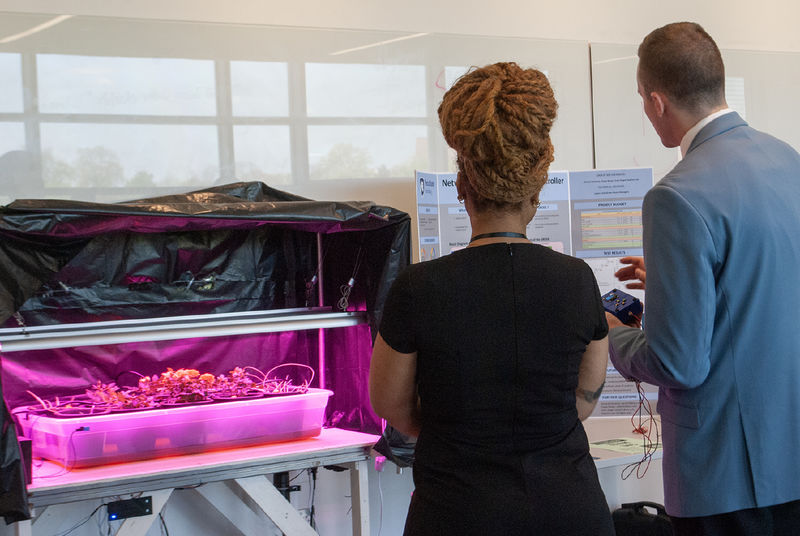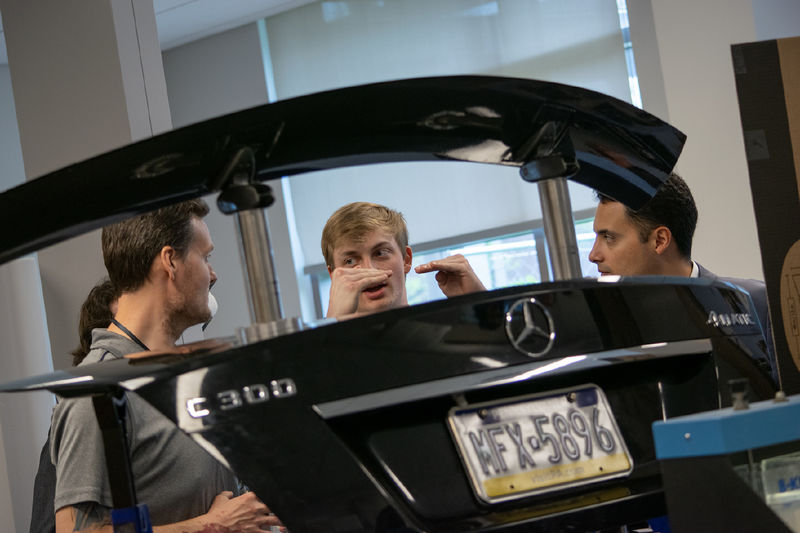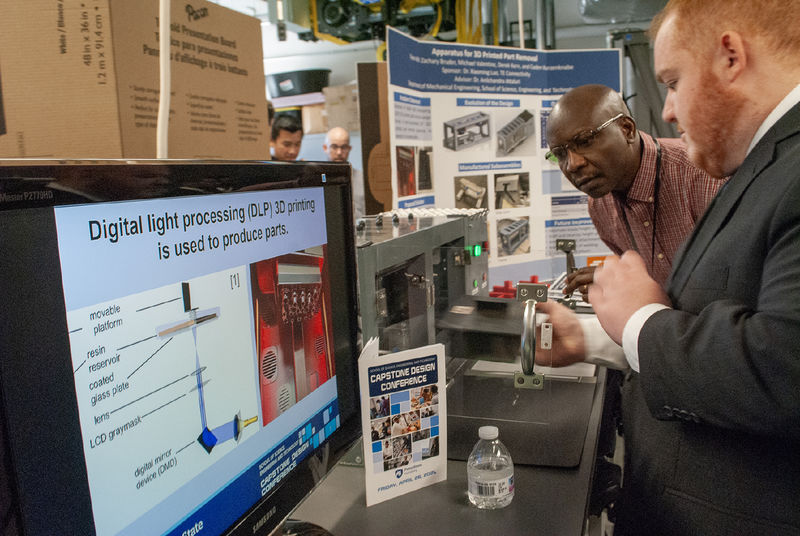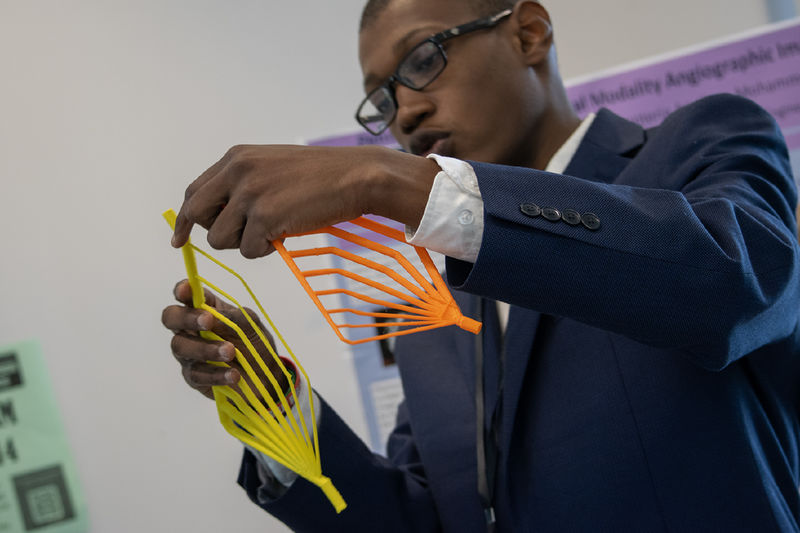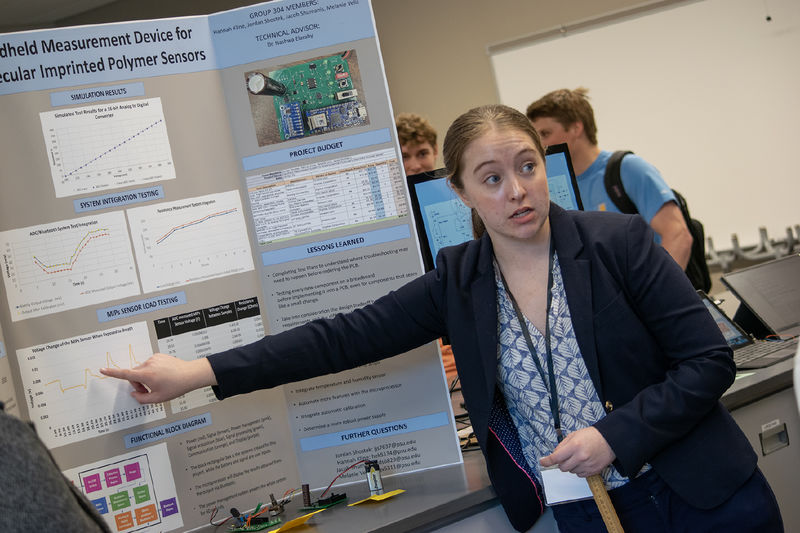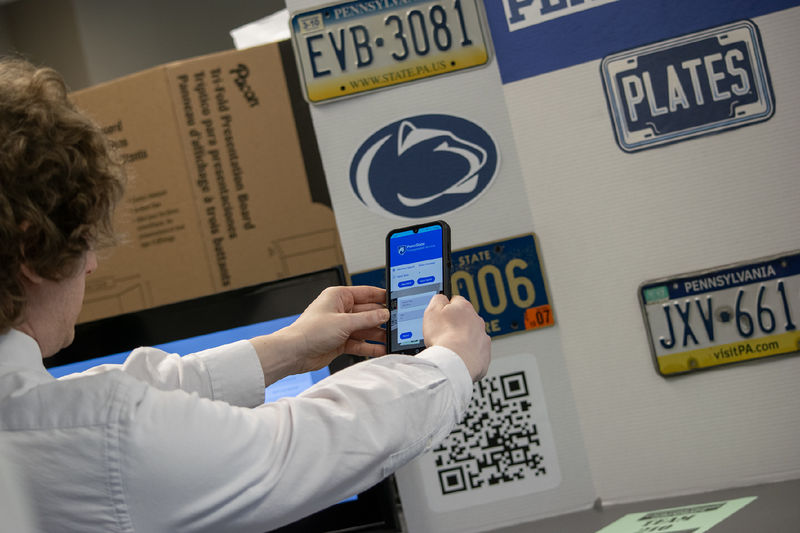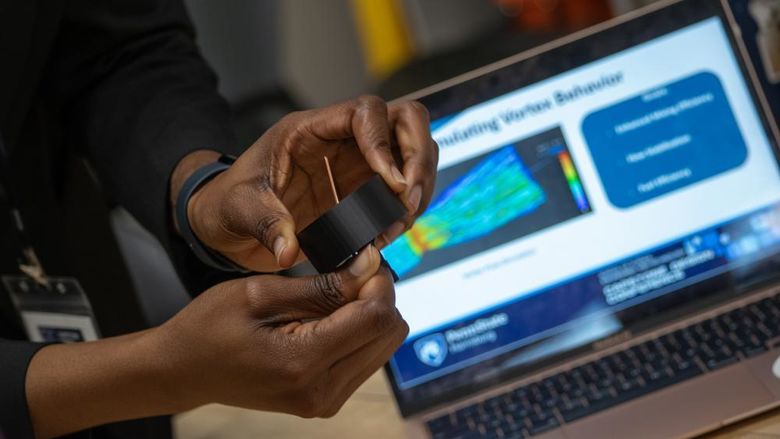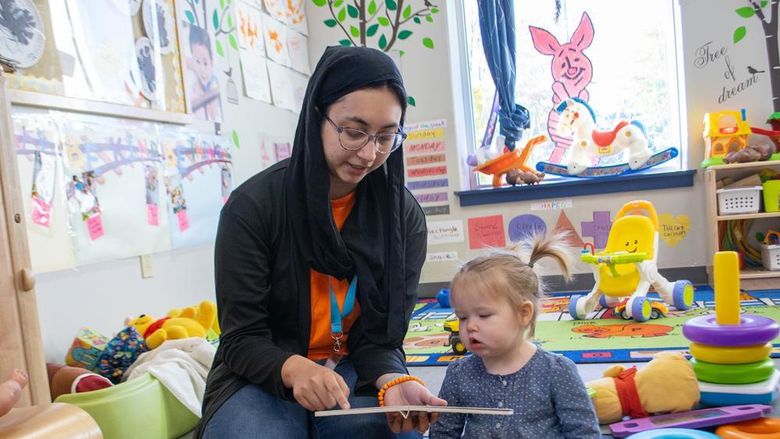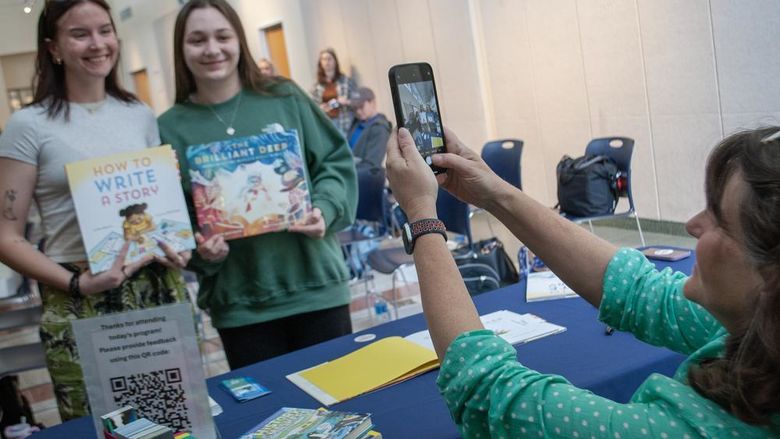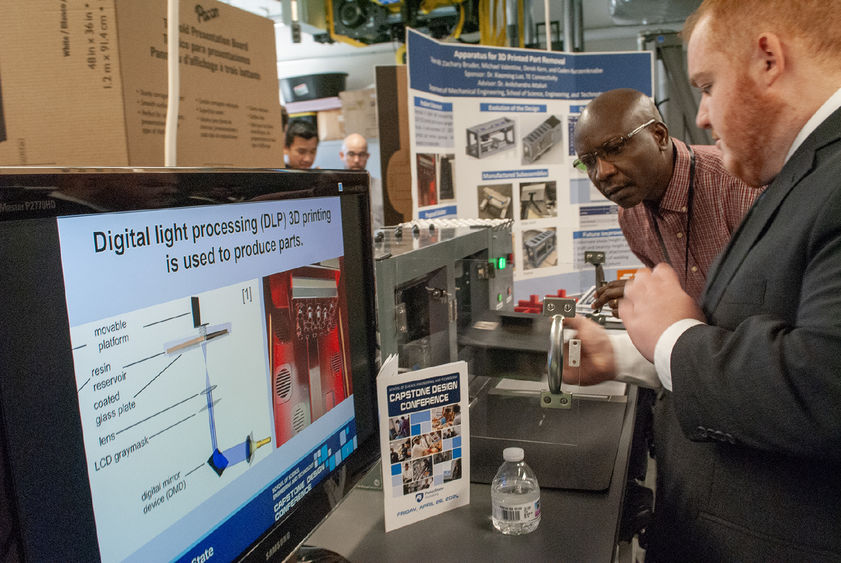
Students shared their work with faculty and others during the 2024 Capstone Design Conference, held by the School of Science, Engineering and Technology. The conference was the culmination of students’ undergraduate studies and provided the opportunity to combine classroom learning with real-life applications and collaborate with industry sponsors.
MIDDLETOWN, Pa. — Outstanding student projects were recognized during the Penn State Harrisburg School of Science, Engineering, and Technology Capstone Design Conference held in April. The conference was the culmination of students’ undergraduate studies and provided the opportunity to combine classroom learning with real-life applications and collaborate with industry sponsors.
Judges selected winners from several program categories: civil engineering and structural design/construction engineering technology; computer science; electrical engineering and electrical engineering technology; mechanical engineering and mechanical engineering technology; as well as awarding the James A. Andrews Award for Excellence in Capstone Design.
Awards were given to outstanding group projects based on the criteria of overall appearance and quality of display; overall professional appearance of presenters; effectiveness of display, support materials and experimental set-ups; project summary by the team or individual; interaction with visitors; and innovation. Each program had its own judges.
The James A. Andrews Memorial Award for Excellence in Capstone Design recognizes and encourages students who best demonstrate interest, motivation and ability in identifying and solving an engineering problem that addresses a real-world concern. This sponsored award of $1,000 is intended to honor students who couple creative approaches with practical ability to successfully resolve a situation.
The award was established by the family of James "Jim" Andrews, who was an alumnus of Penn State and worked as a senior field support engineer for Rockwell Automation in York, Pennsylvania, in admiration of Andrews’ flexible, "can-do" spirit. The award is presented annually. The winner of this award was chosen from among the first-place winners in each category.
View more photos from the 2024 Capstone Design Conference.
The winners include:
First place, Civil, Construction, and Environmental Engineering
- Project: The Nittany Nook - Penn State COE West 1
- Team Members: Noor Auchey, Sofia Costagliola, Lauren Hess, Tracy Kinzer, Brianna Rotheram, Larry Stepansky, Nicholas Yeagy
- Advisers: Shashidhara S. Marikunte, Sofia M. Vidalis, Nikhil Menon
- Supported: Payette Associates, Inc. and The Whiting-Turner Contracting Company
Project Description: West 1 is a brand-new Engineering Collaborative Research and Education (ECoRE) building that is under construction at Penn State. After reviewing the structural plans, the team decided that incorporating an addition to the existing building would more effectively cater to the needs of the students. The addition would consist of enclosing the mezzanine and transforming the space into a vibrant green cafe and recreational area. The cafe would include a coffee and pastry bar along with plenty of seating for students to collaborate. The space’s ambiance will be enhanced by numerous plants, creating a refreshing atmosphere for relaxation and focused academic interactions.
First place, Computer Science
- Project: Voice-Controlled Robot
- Team Members: Japheth Beiler, Tyler Lindsay, Gabriel Marx
- Advisers: Truong Tran, Sayed Mohsin Reza
A remotely-controlled robot can be incredibly helpful for transporting supplies and providing assistance in potentially dangerous areas. The goal was to create a more flexible version of this robot by increasing its ease of use. To do this, the team has designed a voice-controlled robot that is able to follow general movement instructions, including commands to navigate to specified targets. Information from the robot, including a video feed, is streamed to a central website. The intention is to create a simple software framework that can be extended to other projects for more specific and complex situations.
First place, Electrical Engineering
- Project: Loudspeaker Sweeper
- Team Members: Steven Carr, Samuel Hilbert, Michael Villalona Nunez
- Adviser: Nashwa Elaraby
Project Description: The Loudspeaker Sweeper is a sine wave generator designed to test pro audio loudspeakers. The device outputs a professional-grade audio signal with very low noise to permit testing of high sound pressure level (SPL) speakers. The frequency range of the audio sweep is 2 Hz to 20 kHz. This range allows the user to test all parts of the loudspeaker, including subwoofers, midrange drivers, tweeters, and the cabinet.
First place, Mechanical Engineering AND James A. Andrews Memorial Award for Excellence
- Project: PLC-Based Process Control Modules
- Team Members: Steven Caldwell, Taehan Kim, Jacob Roberts, Kimberly Ulishney
- Adviser: Anilchandra Attaluri
Project Description: This project designs and establishes PLC-based process control demonstration and laboratory training units for instrumentation and controls courses. The modular laboratory desktop unit teaches the fundamentals of data acquisition, human machine interface, and control system concepts covering difference process control applications such as level, flow, temperature, and water quality dissolved solids. Laboratory experiment manuals detailing real-world scenarios for curriculum content are developed to facilitate the interaction with the laboratory training unit and teach the targeted concepts.
Student Choice Award
- Project: Apparatus for 3D Printed Part Removal
- Team Members: Zachary Bruder, Derek Kern, Caden Kurzenknabe, Michael Valentine
- Adviser: Anilchandra Attaluri
- Sponsor: Xiaoming Luo, principal manufacturing and process development engineer at TE Connectivity
Project Description: The goal of the project is to design an apparatus that can semi-automatically remove digital light processing (DLP) 3D printed parts from the build plate. The apparatus will be used at TE Connectivity’s DLP production facility to replace manual removal of parts and increase safety. After inserting the build plate into the apparatus, a stepper motor-powered ball screw pushes the build plate across a blade. This blade scrapes the parts off the build plate and into a collection tray that can be removed from the apparatus and easily moved to post-processing stations.
